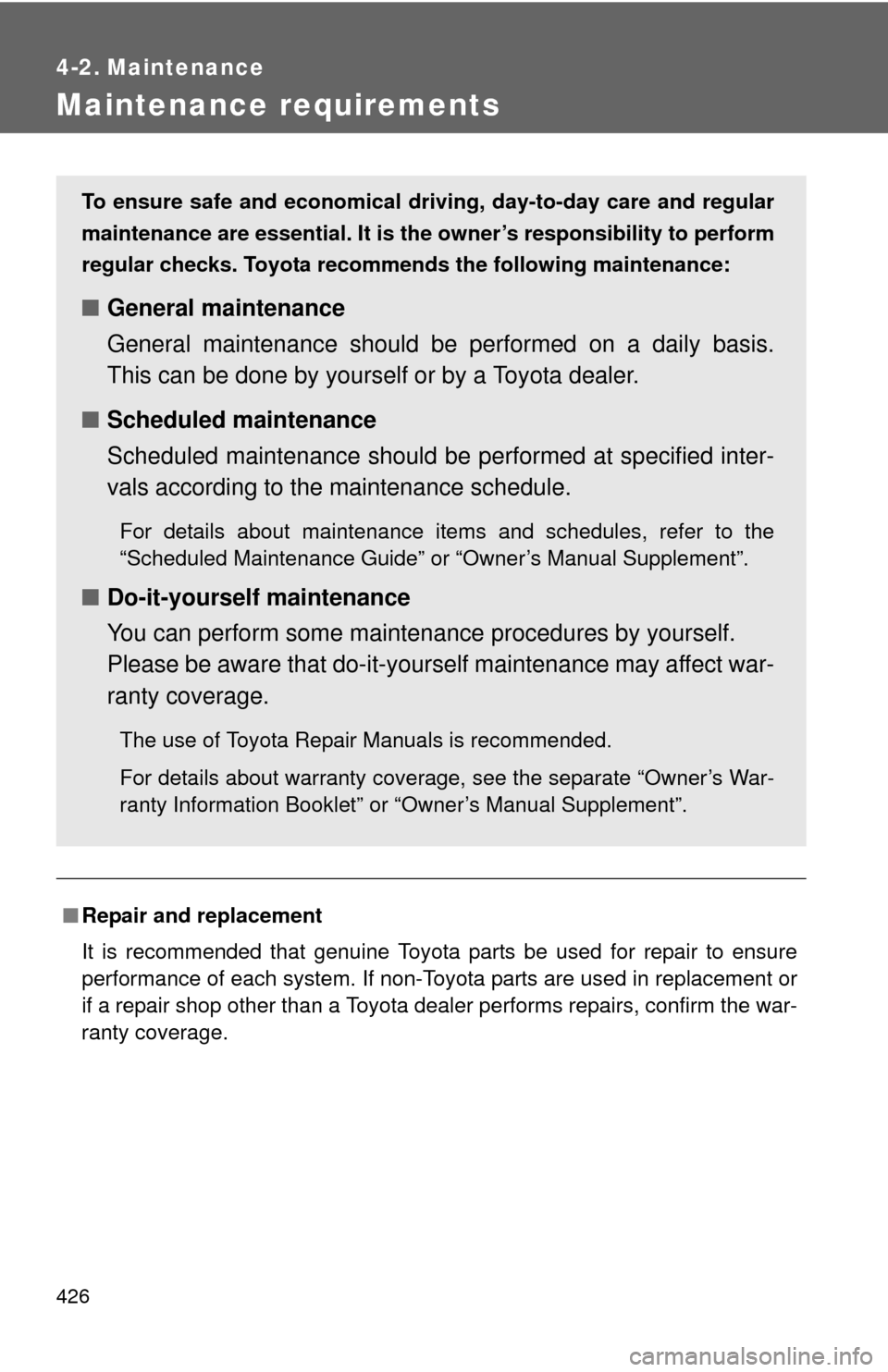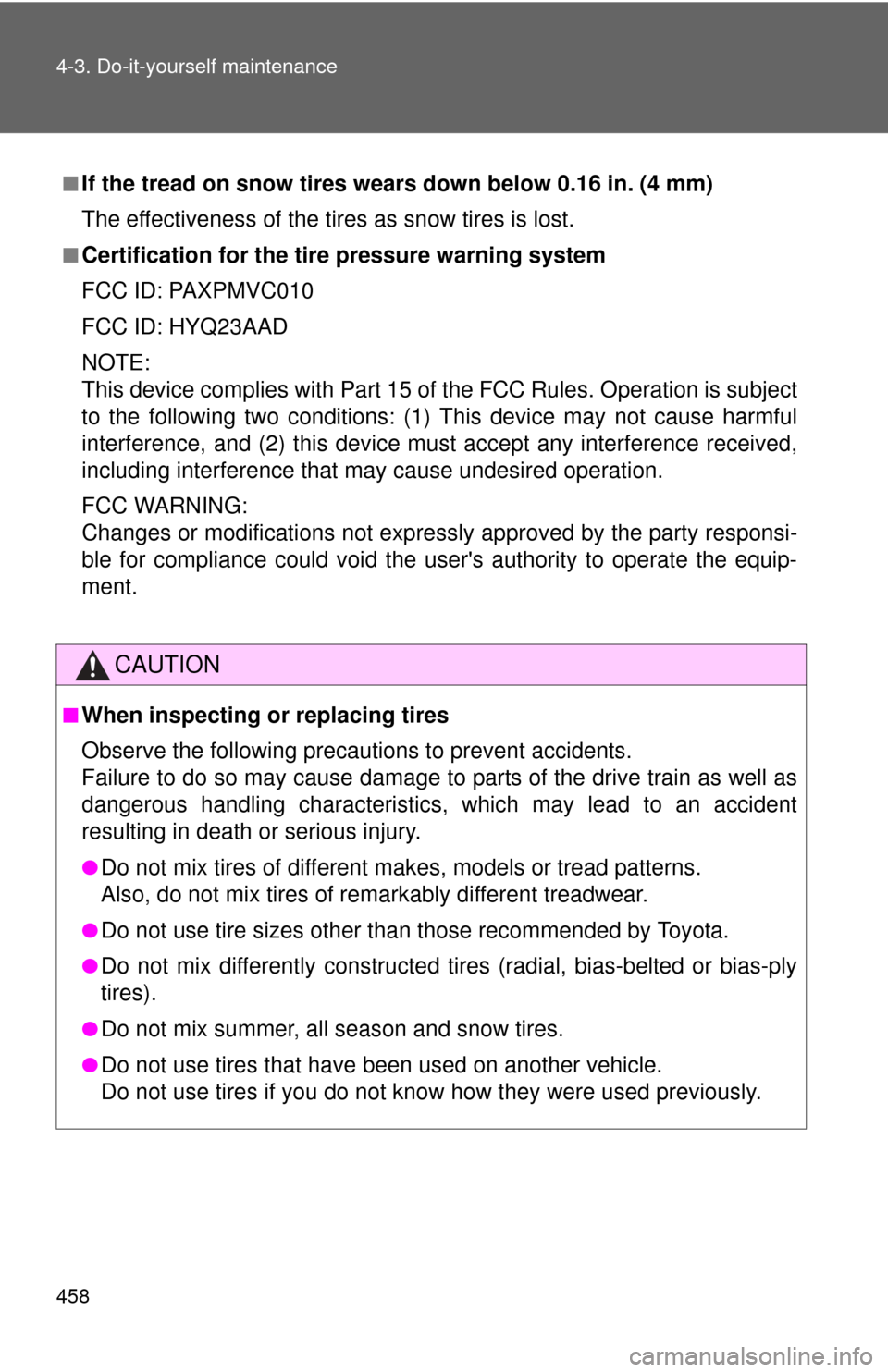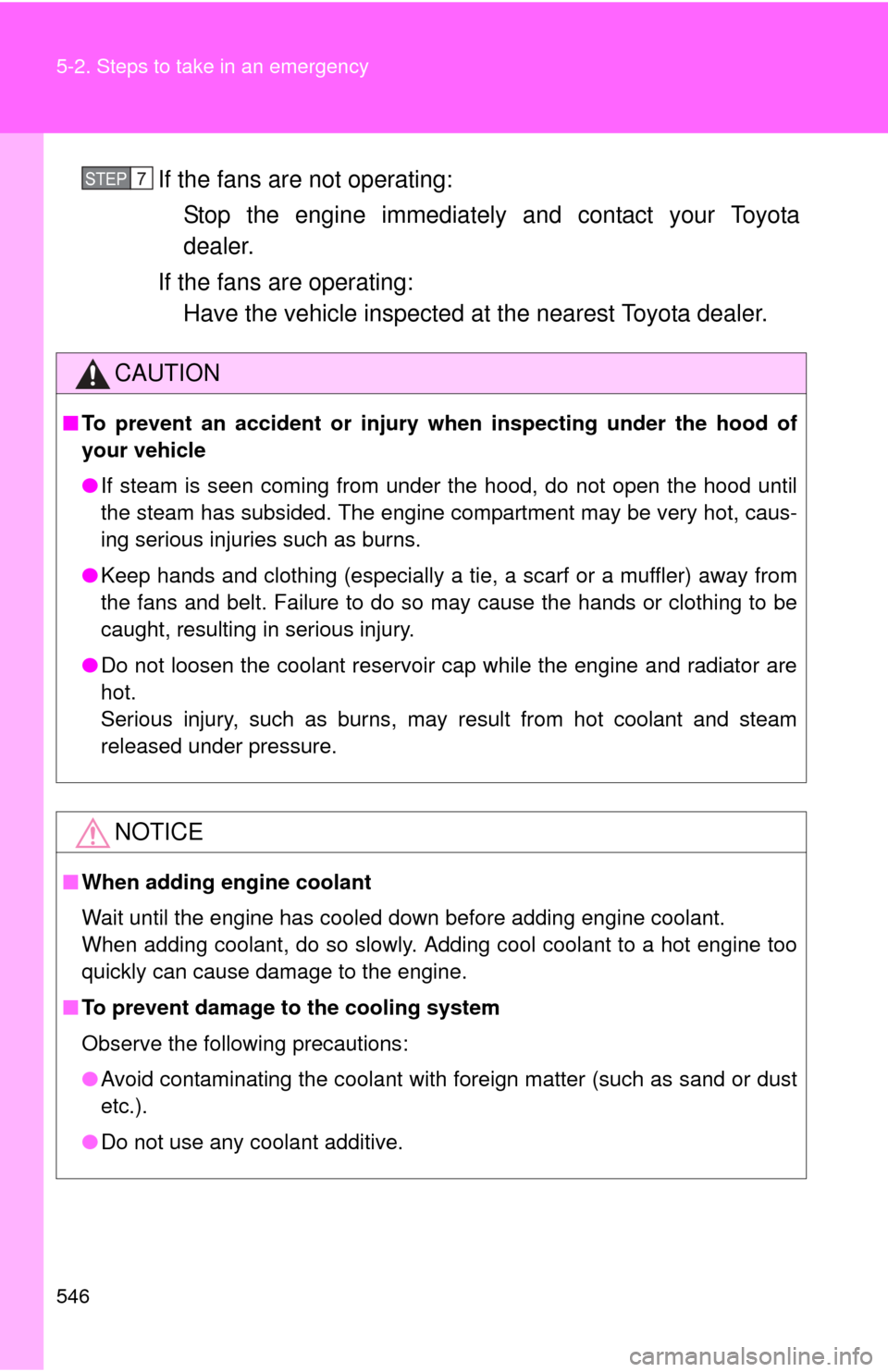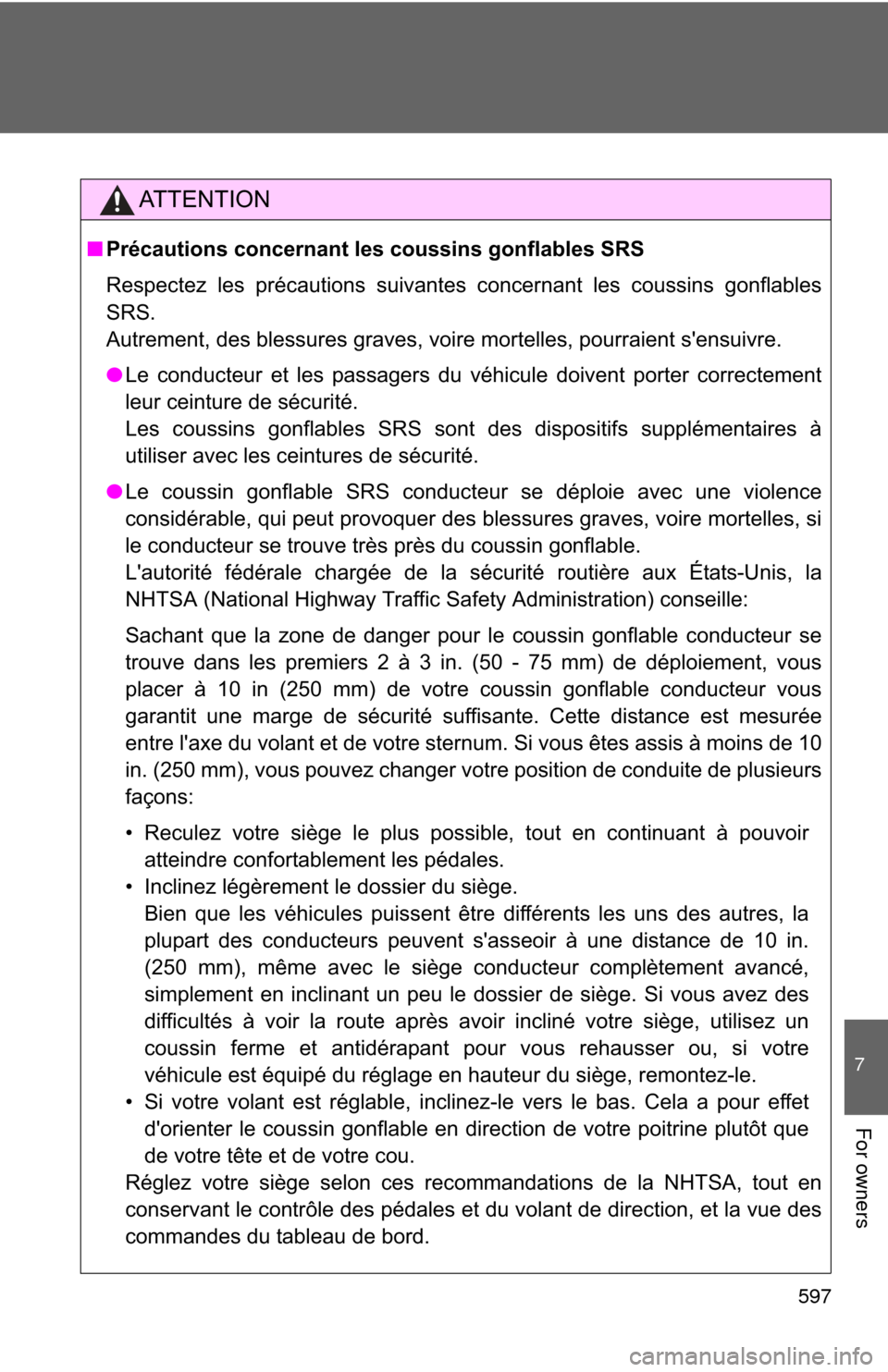ESP TOYOTA CAMRY 2014 XV50 / 9.G Service Manual
[x] Cancel search | Manufacturer: TOYOTA, Model Year: 2014, Model line: CAMRY, Model: TOYOTA CAMRY 2014 XV50 / 9.GPages: 620, PDF Size: 7.47 MB
Page 425 of 620

425
4-1. Maintenance and care
4
Maintenance and care
NOTICE
■
Cleaning detergents
●Do not use the following types of detergent, as they may discolor the vehi-
cle interior or cause streaks or damage to painted surfaces:
• Non-seat portions: Organic substances such as benzene or gasoline,
alkaline or acidic solutions, dye, and bleach
• Seats: Alkaline or acidic solutions, such as thinner, benzene, and alco- hol
● Do not use polish wax or polish cleaner. The instrument panel's or other
interior part’s painted surface may be damaged.
■ Preventing damage to leather surfaces
Observe the following precautions to avoid damage to and deterioration o\
f
leather surfaces:
●Remove any dust or dirt from leather surfaces immediately.
● Do not expose the vehicle to direct sunlight for extended periods of time.
Park the vehicle in the shade, especially during summer.
● Do not place items made of vinyl, plastic, or containing wax on the uphol-
stery, as they may stick to the leather surface if the vehicle interior heats
up significantly.
■ Water on the floor
Do not wash the vehicle floor with water.
Vehicle systems such as the audio system may be damaged if water comes
into contact with electrical components such as the audio system above or
under the floor of the vehicle. Water may also cause the body to rust.
■ Cleaning the inside of the rear window
●Do not use glass cleaner to clean the rear window, as this may cause
damage to the rear window defogger heater wires or antenna. Use a cloth
dampened with lukewarm water to gently wipe the window clean. Wipe the
window in strokes running parallel to the heater wires or antenna.
● Be careful not to scratch or damage the heater wires or antenna.
Page 426 of 620

426
4-2. Maintenance
Maintenance requirements
■Repair and replacement
It is recommended that genuine Toyota parts be used for repair to ensure
performance of each system. If non-Toyota parts are used in replacement or
if a repair shop other than a Toyota dealer performs repairs, confirm the war-
ranty coverage.
To ensure safe and economical driv ing, day-to-day care and regular
maintenance are essential. It is the owner’s responsibility to perform
regular checks. Toyota recommen ds the following maintenance:
■General maintenance
General maintenance should be performed on a daily basis.
This can be done by yourself or by a Toyota dealer.
■ Scheduled maintenance
Scheduled maintenance should be performed at specified inter-
vals according to the maintenance schedule.
For details about maintenance items and schedules, refer to the
“Scheduled Maintenance Guide” or “Owner’s Manual Supplement”.
■Do-it-yourself maintenance
You can perform some maintenance procedures by yourself.
Please be aware that do-it-yourself maintenance may affect war-
ranty coverage.
The use of Toyota Repair Manuals is recommended.
For details about warranty coverage, see the separate “Owner’s War-
ranty Information Booklet” or “Owner’s Manual Supplement”.
Page 458 of 620

458 4-3. Do-it-yourself maintenance
■If the tread on snow tires wears down below 0.16 in. (4 mm)
The effectiveness of the tires as snow tires is lost.
■Certification for the tire pressure warning system
FCC ID: PAXPMVC010
FCC ID: HYQ23AAD
NOTE:
This device complies with Part 15 of the FCC Rules. Operation is subject
to the following two conditions: (1) This device may not cause harmful
interference, and (2) this device must accept any interference received,
including interference that may cause undesired operation.
FCC WARNING:
Changes or modifications not expre ssly approved by the party responsi-
ble for compliance could void the user's authority to operate the equip-
ment.
CAUTION
■When inspecting or replacing tires
Observe the following precautions to prevent accidents.
Failure to do so may cause damage to parts of the drive train as well as
dangerous handling characteristics, which may lead to an accident
resulting in death or serious injury.
●Do not mix tires of different makes, models or tread patterns.
Also, do not mix tires of remarkably different treadwear.
●Do not use tire sizes other than those recommended by Toyota.
●Do not mix differently constructed ti res (radial, bias-belted or bias-ply
tires).
●Do not mix summer, all season and snow tires.
●Do not use tires that have been used on another vehicle.
Do not use tires if you do not know how they were used previously.
Page 518 of 620

518 5-2. Steps to take in an emergency
CAUTION
■Maintenance of the tires (vehicles with a tire pressure warning sys-
tem)
Each tire, including the spare (if provided), should be checked monthly
when cold and inflated to the inflation pressure recommended by the
vehicle manufacturer on the vehicle placard or tire inflation pressure
label (tire and load information label). (If your vehicle has tires of a differ-
ent size than the size indicated on the vehicle placard or tire inflation
pressure label [tire and load information label], you should determine the
proper tire inflation pr essure for those tires.)
As an added safety feature, your vehicle has been equipped with a tire
pressure monitoring system (TPMS-ti re pressure warning system) that
illuminates a low tire pressure telltal e (tire pressure warning light) when
one or more of your tires is significantly under-inflated. Accordingly,
when the low tire pressu re telltale (tire pressure warning light) illumi-
nates, you should stop and check your tires as soon as possible, and
inflate them to the proper pressure. Driving on a significantly under-
inflated tire causes the tire to overheat and can lead to tire failure.
Under-inflation also reduces fuel effi ciency and tire tread life, and may
affect the vehicle's hand ling and stopping ability.
Please note that the TPMS (tire pressure warning system) is not a sub-
stitute for proper ti re maintenance, an d it is the driver's responsibility to
maintain correct tire pressure, even if under-inflation has not reached the
level to trigger illu mination of the TPMS low tire pressure telltale (tire
pressure warning light).
Page 541 of 620

5
When trouble arises
541
5-2. Steps to take in an emergency
■
Starting the engine when the battery is discharged
The engine cannot be started by push-starting.
■ To prevent battery discharge
●Turn off the headlights and the audio system while the engine is off.
● Turn off any unnecessary electrical components when the vehicle is run-
ning at a low speed for an extended period, such as in heavy traffic.
■ Precautions when the battery is di scharged (vehicles with a smart key
system)
● In some cases, it may not be possible to unlock the doors using the smart
key system when the battery is discharged. Use the wireless remote con-
trol or the mechanical key to lock or unlock the doors.
● The engine may not start on the first attempt after the battery has
recharged but will start normally after the second attempt. This is not a
malfunction.
● The “ENGINE START STOP” switch mode is memorized by the vehicle.
When the battery is reconnected, the system will return to the mode it
was in before the battery was discharged. Before disconnecting the bat-
tery, turn the “ENGINE START STOP” switch off.
If you are unsure what mode the “ENGINE START STOP” switch was in
before the battery discharged, be especially careful when reconnecting
the battery.
■ When the battery is removed or discharged
Make sure that the key is not inside the vehicle when recharging or replacing
the battery. The key may be locked in the vehicle if the alarm is activated.
(P. 101)
Page 546 of 620

546 5-2. Steps to take in an emergency
If the fans are not operating:Stop the engine immediately and contact your Toyota
dealer.
If the fans are operating: Have the vehicle inspected at the nearest Toyota dealer.
CAUTION
■To prevent an accident or injury when inspecting under the hood of
your vehicle
● If steam is seen coming from under the hood, do not open the hood until
the steam has subsided. The engine compartment may be very hot, caus-
ing serious injuries such as burns.
● Keep hands and clothing (especially a tie, a scarf or a muffler) away from
the fans and belt. Failure to do so may cause the hands or clothing to be
caught, resulting in serious injury.
● Do not loosen the coolant reservoir cap while the engine and radiator are
hot.
Serious injury, such as burns, may result from hot coolant and steam
released under pressure.
NOTICE
■When adding engine coolant
Wait until the engine has cooled down before adding engine coolant.
When adding coolant, do so slowly. Adding cool coolant to a hot engine too
quickly can cause damage to the engine.
■ To prevent damage to the cooling system
Observe the following precautions:
●Avoid contaminating the coolant with foreign matter (such as sand or dust
etc.).
● Do not use any coolant additive.
STEP7
Page 574 of 620

574 6-1. Specifications
■Treadwear
The treadwear grade is a comparative rating based on the wear
rate of the tire when tested under controlled conditions on a speci-
fied government test course.
For example, a tire graded 150 would wear one and a half (1 - 1/2)
times as well on the government course as a tire graded 100.
The relative performance of tires depends upon the actual conditions
of their use. Performance may diff er significantly from the norm due
to variations in driving habits, service practices and differences in
road characteristics and climate.
■ Traction AA, A, B, C
The traction grades, from highest to lowest, are AA, A, B and C,
and they represen t the tire's ability to stop on wet pavement as
measured under controlled cond itions on specified government
test surfaces of asphalt and concrete.
A tire marked C may have poor traction performance.
Warning: The traction grade assigned to this tire is based on braking
(straight ahead) traction tests and does not include cornering (turn-
ing) traction.
■ Temperature A, B, C
The temperature grades are A (the highest), B, and C, represent-
ing the tire's resistance to the generation of heat and its ability to
dissipate heat when tested under controlled conditions on a speci-
fied indoor laboratory test wheel.
Sustained high temperature can cause the material of the tire to
degenerate and reduce tire life, and excessive temperature can lead
to sudden tire failure.
Grade C corresponds to a level of performance which all passenger
car tires must meet under the Federal Motor Vehicle Safety Standard
No. 109.
Grades B and A represent higher levels of performance on the labo-
ratory test wheel than the minimum required by law.
Page 597 of 620

597
7
For owners
AT T E N T I O N
■Précautions concernant les coussins gonflables SRS
Respectez les précautions suivantes concernant les coussins gonflables
SRS.
Autrement, des blessures graves, voire mortelles, pourraient s'ensuivre.
●Le conducteur et les passagers du véhicule doivent porter correctement
leur ceinture de sécurité.
Les coussins gonflables SRS sont des dispositifs supplémentaires à
utiliser avec les ceintures de sécurité.
● Le coussin gonflable SRS conducteur se déploie avec une violence
considérable, qui peut provoquer des blessures graves, voire mortelles, si
le conducteur se trouve très près du coussin gonflable.
L'autorité fédérale chargée de la sécurité routière aux États-Unis, la
NHTSA (National Highway Traffic Safety Administration) conseille:
Sachant que la zone de danger pour le coussin gonflable conducteur se
trouve dans les premiers 2 à 3 in. (50 - 75 mm) de déploiement, vous
placer à 10 in (250 mm) de votre coussin gonflable conducteur vous
garantit une marge de sécurité suffisante. Cette distance est mesurée
entre l'axe du volant et de votre sternum. Si vous êtes assis à moins de 10
in. (250 mm), vous pouvez changer votre position de conduite de plusieurs
façons:
• Reculez votre siège le plus possible, tout en continuant à pouvoir
atteindre confortablement les pédales.
• Inclinez légèrement le dossier du siège. Bien que les véhicules puissent être différents les uns des autres, la
plupart des conducteurs peuvent s'asseoir à une distance de 10 in.
(250 mm), même avec le siège conducteur complètement avancé,
simplement en inclinant un peu le dossier de siège. Si vous avez des
difficultés à voir la route après avoir incliné votre siège, utilisez un
coussin ferme et antidérapant pour vous rehausser ou, si votre
véhicule est équipé du réglage en hauteur du siège, remontez-le.
• Si votre volant est réglable, inclinez-le vers le bas. Cela a pour effet d'orienter le coussin gonflable en direction de votre poitrine plutôt que
de votre tête et de votre cou.
Réglez votre siège selon ces recommandations de la NHTSA, tout en
conservant le contrôle des pédales et du volant de direction, et la vue des
commandes du tableau de bord.
Page 602 of 620

602
AT T E N T I O N
■Précautions concernant les coussins gonflables SRS
● Si vous avez des difficultés à respirer après le déploiement des coussins
gonflables SRS, ouvrez une porte ou une vitre pour faire entrer de l'air
frais, ou bien descendez du véhicule si cela ne présente pas de danger.
Essuyez tout résidu dès que possible afin d'éviter d'éventuelles irritations
de la peau.
● Si les parties renfermant les coussins gonflables SRS, telles que la
garniture du volant et les garnitures de montants avant et arrière, sont
abîmées ou craquelées, faites-les remplacer par votre concessionnaire
To y o t a .
■ Modification et mise au rebut des éléments du système de coussins
gonflables SRS
Consultez impérativement votre concessionnaire Toyota si vous avez besoin
d'intervenir sur votre véhicule ou de procéder à l'une des modifications
suivantes. Les coussins gonflables SRS peuvent dysfonctionner ou se
déployer (se gonfler) accidentellement, provoquant la mort ou de graves
blessures.
● Installation, retrait, démontage et réparation des coussins gonflables SRS
● Réparations, modifications, démontage ou remplacement du volant, du
tableau de bord, de la planche de bord, des sièges ou de leur garnissage,
des montants avant, latéraux et arrière ou des rails latéraux de toit
● Réparations ou modifications des ailes avant, du bouclier avant, ou des
flancs de l'habitacle
● Installation d'un protège-calandre (pare-buffle, pare-kangourou, etc.), de
chasse-neige, de treuils
● Modification des suspensions du véhicule
● Installation d'appareils électroniques, tels qu'un radioémetteur/récepteur
ou d'un lecteur CD
● Aménagements du véhicule visant à permettre sa conduite par une
personne atteinte d'un handicap physique
Page 616 of 620

616
What to do if...
What to do if...
A tire puncturesP. 520If you have a flat tire
The engine does not start
P. 532If the engine will not start
P. 9 6Engine immobilizer system
P. 539If the battery is discharged
P. 536If the electronic key does not oper-
ate properly
The shift lever cannot be
moved outP. 534If the shift lever cannot be shifted
from P
The rightmost segment of the
engine coolant temperature dis-
play flashes
Steam can be seen coming
from under the hood
P. 544If your vehicle overheats
The key is lostP. 535If you lose your keys
The battery runs outP. 539If the battery is discharged
The doors cannot be lockedP. 5 5Doors
The horn begins to soundP. 9 9Alarm